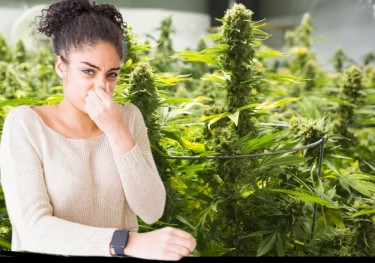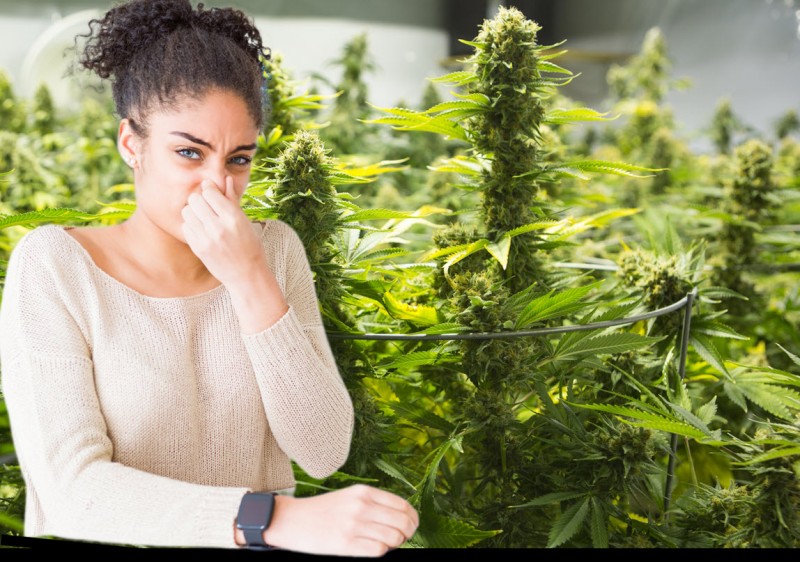
Regardless of your stance on the matter, you're likely familiar with it: that distinct skunk-like aroma from cannabis that often lingers on street corners, in concert venues, parks, and sometimes even within the confines of your own home. The unmistakable scent of marijuana elicits a range of reactions, from disapproving scowls to contented smiles. Yet, nearly everyone can agree on one thing—they don't want it permeating their living spaces.
As the Fresh Toast first discussed, as more states legalize recreational and medicinal marijuana, the stigma surrounding it dissipates like smoke. Professional cleaners are reporting a growing trend of encountering homes that bear the lingering scent of cannabis. Sharleen Schuiling, the owner of Om Sweet Om, a California cleaning company that exclusively uses all-natural products, points out, "Recreational marijuana is becoming as commonplace as enjoying a glass of wine here."
The most straightforward solution to eliminate the lingering marijuana odor in one's home is to consume it outdoors exclusively. However, there are valid reasons why some individuals may opt to partake indoors. Schuiling's clients, which include cancer patients using marijuana medicinally, exemplify this. For some, stepping outside isn't an option due to their weakened condition or illness. Schuiling explains, "Depending on your location, the weather may not be conducive to outdoor smoking, or you may have neighbors you wish to avoid offending with the scent of smoke. So, whether it's a matter of convenience or physical discomfort, there are instances when smoking indoors becomes a necessity."
Understanding the Potency of Cannabis Odor
Cannabis is a potent plant. “It has a lot of terpenes and some sulfurous compounds,” says Laura Haupert, who, as chief scientific officer for air freshener brand Cannabolish, studies the drug's chemical composition. “Unfortunately, sulfur compounds have a really low odor threshold, meaning that you can smell them at a low concentration.”
When the plant is burned for consumption, new chemicals form during combustion. Some particles that make up the smoke are heavier than the air, and “when you blow them, it is going to surround that area and stick to the fabric,” Haupert says. “If you are going to eliminate an odor, you have to eliminate every place that odor is. So, when you are thinking, ‘my house smells,’ you have to think about everywhere that smoke might have been.”
Preparing Your Space for Odor Control
Grace Reynolds, the President of the American House Cleaners Association, emphasizes that effective preparation stands as the "foremost" method for mitigating the odor of marijuana within a home. This entails optimizing ventilation, with Reynolds advising, "Opening windows is an excellent strategy." Furthermore, she highlights the effectiveness of ozone-generating machines, which capture organic particles and bind them with oxygen to eliminate the lingering scent in the air.
Additionally, Sharleen Schuiling points out that conventional air purifiers, particularly those equipped with medical-grade high-efficiency particulate air (HEPA) filters, can also reduce smoke and odors. In a pinch, traditional ceiling and portable fans can also be beneficial.
For an unconventional yet effective approach, cannabis journalist Miguel Antonio Ordoñez suggests smoking in the bathroom while running the shower. This method can help propel the smoke through the bathroom fan, aiding in odor control.
Optimizing Your Smoking Method for Minimal Odor
The resulting odor isn't solely determined by where you smoke but also by the method and type of cannabis you choose. Different devices, for instance, can vary in how much smoke they produce. Miguel Antonio Ordoñez says, "Some individuals opt for a one-hitter pipe because when you light it up and exhale, the smoke dissipates quickly." This contrasts to a joint, which emits a continuous blaze akin to a small torch in your hand.
Furthermore, specific marijuana strains tend to emit more pronounced and undesirable odors than others. Ordoñez advises conducting thorough research through online resources or your local dispensary before purchasing new cannabis strains.
Short-Term Solutions to Tackle Lingering Odor
The odor of marijuana tends to be most pronounced immediately after smoking. Grace Reynolds suggests trying traditional remedies like lighting candles or incense to combat this scent. She also offers unconventional suggestions, stating, "Let's say you have unexpected guests, like your mother-in-law is dropping by, and you need a quick solution. You can even pop some popcorn in the microwave."
In addition to these methods, Reynolds recommends boiling vinegar or using essential oils, particularly lavender and citrus oils, to help mask the smell of smoke. However, it's important to note that these fragrances conceal the marijuana odor without effectively eliminating it.
Reynolds further explains, "The smell can permeate every surface and combine with various household contaminants, seeping into your belongings and furniture." Consequently, these solutions provide only temporary relief in the short term.
Effective Long-Term Strategies for Odor Elimination
Imagine you've already experimented with proper ventilation techniques and concealing the lingering smoke scent, but the odor persists. Grace Reynolds emphasizes the importance of thorough cleaning, from the top to the bottom of your living space, as marijuana smoke tends to bond with contaminants, such as dust and grime. In bathrooms, the smoke odor can even adhere to hard water buildup.
Reynolds advises washing any items that have come into contact with the smoke, including bedding, curtains, and rugs, ensuring they check their machine-washable status. She suggests consulting a specialist for items that can't be machine-washed. Fabrics often accumulate smoke particles or resin, the sticky, insoluble residue accumulating on smoking devices.
Sharleen Schuiling recommends soaking clothes in alcohol or spot cleaning with it if you find the odor hard to remove from the fabric. To further mask the scent, you can also consider adding a dash of orange essential oil. Alcohol can also effectively combat resin buildup in other areas of your home. "If the resin has adhered to your table and become sticky, you can use alcohol mixed with orange oil and a plastic or razor edge to remove it," says Schuiling. She advises conducting a spot test on clothing, curtains, and furniture with alcohol and essential oils before using them for full cleaning to avoid potential staining.
For instance, you can test a varnished spot under the table or a small patch on the back of your curtains. Reynolds also suggests that steam cleaning your couch, carpet, or upholstery can lift stubborn odors. If all else fails, consider seeking professional cleaning services for your home.
Bottom Line
In the evolving landscape of marijuana legalization, managing the distinctive scent of cannabis in your home requires a multifaceted approach. Whether you're looking to mask immediate odors, implement long-term solutions, or balance enjoyment and consideration for others, the key lies in understanding the science, optimizing your environment, and making informed choices. By combining short-term fixes with thorough, long-lasting strategies, you can ensure that your living spaces remain welcoming and odor-free, irrespective of your stance on cannabis.







